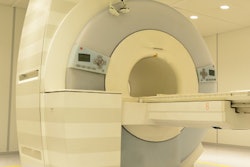
Radiologists on average serve Medicare beneficiaries of higher clinical complexity than other physician specialists, according to a study published in the February issue of Academic Radiology. In fact, out of 54 specialty groups, three radiology subspecialties ranked in the top 25 that treat more medically complicated patients.
The research sheds light on a facet of radiology practice that should be taken into account in an era of increasing attention on physician performance and value-based payment models, wrote the team led by Dr. Andrew Rosenkrantz of NYU Langone Medical Center.
"This aspect of radiology practice hasn't really been investigated, and it's relevant, given the focus on tracking physician performance metrics and linking them to payments," Rosenkrantz told AuntMinnie.com.
Value-based, plus risk
As physician payments shift from fee-for-service models to value-based ones, the complexity of patient populations seen by different types of physicians must be taken into account, the researchers noted (Acad Radiol, February 2018, Vol. 25:2, pp. 219-225).
 Dr. Andrew Rosenkrantz from NYU Langone Medical Center.
Dr. Andrew Rosenkrantz from NYU Langone Medical Center."Physicians caring for sicker patients, as may be anticipated among university and other tertiary care centers, will be challenged in obtaining the same clinical outcomes and resource utilization as those caring for healthier patients," they wrote.
To adjust for this factor, the U.S. Centers for Medicare and Medicaid Services (CMS) developed a risk adjustment methodology called the Hierarchical Condition Category (HCC), which assesses the risk level of groups of beneficiaries versus the overall Medicare population. The model takes into account beneficiary age, gender, reason for Medicare eligibility, Medicaid eligibility status, and clinically significant comorbidities; higher scores indicate sicker or more complex patients who have overall greater medical risk.
For the study, Rosenkrantz and colleagues used 2014 Medicare claims data from 549,194 physicians across 54 specialties, identifying average beneficiary HCC risk scores for all physicians.
The mean HCC risk score across all physician specialties was 1.62. Among all the specialties, the three with the highest average patient HCC scores were nephrology (4.20), infectious disease (2.93), and hospice and palliative care (2.8). The three specialties with the lowest average HCC scores were obstetrics and gynecology (0.96), allergy and immunology (0.98), and dermatology (1.03).
For the 31,175 radiologists in the study sample, the mean HCC risk score was 1.79. But Rosenkrantz's team found that three radiology subpecialties ranked in the top 25 of the 54 physician specialties:
- Interventional radiology ranked fourth, with a mean HCC of 2.6.
- Nuclear medicine ranked 16th, with a mean HCC of 1.87.
- Diagnostic radiology ranked 21st, with a mean HCC of 1.75.
Among the radiology subspecialties, risk scores were highest for vascular and interventional radiology (2.69) and cardiothoracic imaging (2.1) and lowest for breast imaging (1.08) and musculoskeletal imaging (1.68).
The group also found that HCC risk scores were greater for male radiologists; those working in large, urban, or mostly subspecialized practices; and those with teaching affiliations. In fact, teaching affiliation was the strongest independent predictor of patient complexity among radiologists, according to the authors.
"Academic centers are often regional referral facilities, tend to have more subspecialized physicians, and are involved in training and education," Rosenkrantz said. "Combine that with the fact that these centers are often serving the sickest patients, and it's not surprising that teaching affiliation is a strong predictor of patient complexity and the need for greater advanced imaging resources."
Active advocacy
The results suggest that radiologists need to advocate for themselves as value-based care models continue to be established, Rosenkrantz and colleagues wrote. Because risk-based payment arrangements tend to prioritize efficient care, practices entering into agreements like this should emphasize that higher-risk patient populations will most likely require more resources.
"Given our findings, radiology practices with teaching affiliations, of larger practice sizes, in urban locations, with higher fractions of subspecialists, and higher numbers of interventional radiologists in particular, may anticipate greater resource utilization for their patients and thus need to proactively seek more favorable risk adjustment arrangements on this basis," the authors concluded.




















